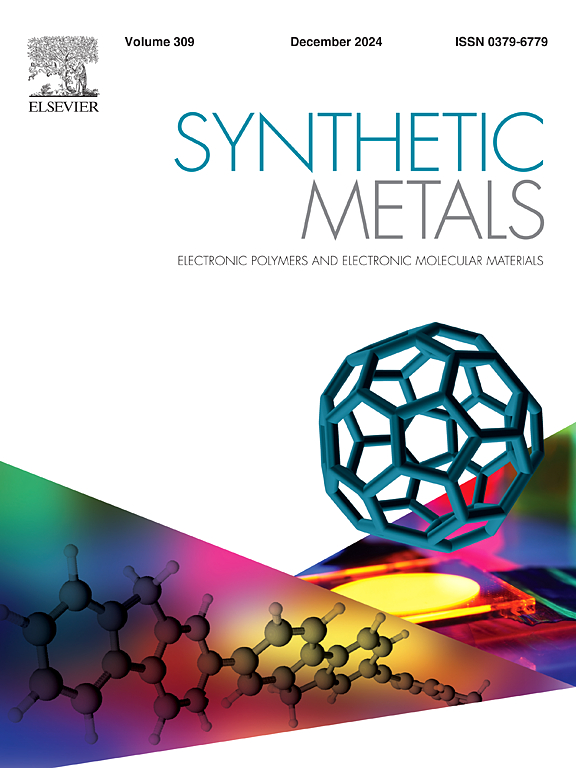过二酰亚胺衍生电子传输材料的分子尺寸对p-i-n钙钛矿太阳能电池效率和稳定性的影响
IF 4.6
3区 材料科学
Q2 MATERIALS SCIENCE, MULTIDISCIPLINARY
引用次数: 0
摘要
在此,我们报道了一系列具有辛基十二烷基取代基的过二亚胺(PDI)衍生物的合成和应用,包括PDI单体、形式二聚体和通过噻吩嵌段介导的二聚和聚合得到的聚合物。红外散射扫描近场光学显微镜(IR s-SNOM)表征表明,与单体和二聚体PDI相比,PDI聚合物形成的膜明显更均匀,缺陷密度降低,表明分子量的增加提高了钙钛矿层的表面覆盖率。因此,采用聚合物PDI作为ETL的PSCs表现出最佳的光伏性能,而基于单体PDI的器件由于薄膜质量差而表现出最低的效率。这些发现突出了基于pdi的大分子etl在钙钛矿光伏发电领域取得进一步进展的巨大潜力。本文章由计算机程序翻译,如有差异,请以英文原文为准。
Impact of the molecular size of the perylenediimide-derived electron transport materials on the efficiency and stability of p-i-n perovskite solar cells
Herein, we report the synthesis and application of a series of perylenediimide (PDI) derivatives with octyldodecyl substituents, including a PDI monomer, formal dimer, and polymer obtained via thiophene block-mediated dimerization and polymerization. Infrared-scattering scanning near-field optical microscopy (IR s-SNOM) characterization demonstrated that, compared to monomeric and dimeric PDIs, the PDI polymer forms significantly more uniform films with reduced defect density, indicating that increasing molecular weight improves the surface coverage of the perovskite layer. Consequently, PSCs incorporating polymeric PDI as the ETL exhibited the best photovoltaic performance, while monomeric PDI-based devices showed the lowest efficiency due to poor film quality. These findings highlight the promising potential of macromolecular PDI-based ETLs for achieving further advancements in perovskite photovoltaics.
求助全文
通过发布文献求助,成功后即可免费获取论文全文。
去求助
来源期刊

Synthetic Metals
工程技术-材料科学:综合
CiteScore
8.30
自引率
4.50%
发文量
189
审稿时长
33 days
期刊介绍:
This journal is an international medium for the rapid publication of original research papers, short communications and subject reviews dealing with research on and applications of electronic polymers and electronic molecular materials including novel carbon architectures. These functional materials have the properties of metals, semiconductors or magnets and are distinguishable from elemental and alloy/binary metals, semiconductors and magnets.
 求助内容:
求助内容: 应助结果提醒方式:
应助结果提醒方式:


